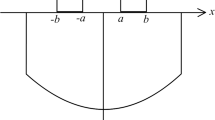For the first time the range of values has been determined experimentally of the absolute contact heat resistance in the zone of the threaded joint of two parts of cylindrical form from aluminum alloy with a thread length exceeding its diameter by a factor of more than 3 with the transferred heat flux varied over the range from 4.5 to 78.5 W. It has been shown that the contact heat resistance is influenced by the value of the transferred heat flux, the presence of a heat conducting medium in the contact zone, and the conditions of tightening the thread for contact heat resistance. It has been established that in a threaded joint of length 53 mm having a diameter of 14 mm and a thread pitch of 0.5 mm without using a heat conducting medium in the contact zone, as the heat flux increases from 4.5 to 78.5 W, the value of the contact heat resistance without tightening of the thread decreases from 0.35 to 0.18oC/W. Tightening of the thread up to the stop leads to an insignifi cant decrease in the value of the contact heat resistance. At the same time the injection into the contact zone of the threaded joint of the heat conducting paste KPT-8 decreases the heat resistance of the contact by a factor of 2.2 at the minimal transferred heat flux (4.5 W) and by a factor of 1.6 at the maximal heat flux (78.5 W).
Similar content being viewed by others
References
S. Yu. Mesnyankin, A. G. Vikulov, and D. G. Vikulov, Modern view on problems of thermal contact between solid bodies, Usp. Fiz. Nauk, 179, No. 9, 945–970 (2009).
H. Fenech, Thermal Conductance of Metallic Surfaces in Contact, Sc.D. Thesis, Massachusetts Institute of Technology (May, 1959).
V. S. Miller, Contact Heat Exchange in Elements of High-Temperature Machines [in Russian], Naukova Dumka, Kiev (1966).
M. G. Cooper, B. B. Mikic, and M. M. Yovanovich, Thermal contact conductance, Int. J. Heat Mass Transf., 12, No. 3, 279–300 (1969).
N. B. Demkin, The Quality of Contact between Rough Surfaces [in Russian], Nauka, Moscow (1970).
V. M. Popov, Heat Exchange in the Zone of Contact between Detachable and Permanent Joints [in Russian], Nauka, Moscow (1971).
Yu. P. Shlykov, E. A. Ganin, and S. N. Tsarevskii, Contact Thermal Resistance [in Russian], Énergiya, Nauka, Moscow 1977.
V. A. Mal′kov, O. N. Favorskii, and V. N. Leont′ev, Contact Heat Exchange in Gas-Turbine Engines and Power Plants [in Russian], Mashinostroenie, Moscow (1978).
G. N. Dul'nev, Yu. P. Zarichnyak, Yu. V. Kuznetsov, and B. V. Pol'shchikov, Analysis of the thermal model of contact heat exchange of rough surfaces, J. Eng. Phys. Thermophys., 38, No. 3, 441–449 (1980).
P. Merjvinsky, J. Nikolaenko, and V. Osinsky, Features of thermal processes in microlaser devices, Proc. SPIE, 4425, 431–438 (2001); https://doi.org/10.1117/12.429765.
A. Ya. Guva, Contact Heat Exchange between Power Semiconductor Devices [in Russian],GUP SIPKA "Nauka," Novosibirsk (2005); http://knigi.tor2.org/?b=3305401.
M. Bahrami, M. M. Yovanovich, and J. R. Culham, Thermal joint resistances of conforming rough surfaces with gas filled caps, J. Thermophys. Heat Transf., 18, No. 3, 318–325 (2004).
S. Yu. Mesnyankin, A. D. Ezhov, and A. A. Basov, Determination of contact thermal resistance on the basis of three-dimensional modeling of contacting surfaces, Izv. Akad. Nauk, Énerg., No. 5, 65–74 (2014).
L. L. Vasiliev, A. G. Kulakov, L. L. Vasiliev Jr., M. I Rabetskii, and A. A. Antukh, Miniature heat pipes for thermal control of radio-electronic equipment, Heat Transf. Res., 38, Issue 3, 245–258 (2007); DOI: https://doi.org/10.1615/HeatTransRes.v38.i3.50.
V. Yu. Kravets, Yu. E. Nikolaenko, and Ya. V. Nekrashevich, Experimental studies of heat-transfer characteristics of miniaturized heat pipes, Heat Transf. Res., 38, Issue 6, 553–563 (2007); DOI: https://doi.org/10.1615/HeatTransRes.v38.i6.70.
S. M. Khairnasov and A. M. Naumova, Heat pipes application to solar energy systems, Appl. Solar Energy, 52, No. 1, 47–60 (2016).
K. Prisniakov, O. Marchenko, Yu. Melikaev, V. Kravetz, Yu. Nikolaenko, and V. Prisniakov, About complex influence of vibrations and gravitational fields on serviceability of heat pipes in composition of the space-rocket systems, 54th Int. Astronautical Congress of the International Astronautical Federation (IAF), the International Academy of Astronautics and the International Institute of Space Law. Germany, Bremen (2003), Vol. 1, pp. 1571–1580; http://dx.doi. org/10.2514/6.IAC-03-I.1.10.
T. Yu. Nikolaenko and Yu. E. Nikolaenko, New circuit solutions for the thermal design of chandeliers with light emitting diodes, Light Eng., 23, No. 3, 85–88 (2015); http://www.scopus.com/inward/record.url?eid=2-s2.0-84966507707&partnerID=MN8TOARS.
D. V. Kozak and Yu. E. Nikolaenko, The working characteristics of two-phase heat transfer deviсes for led modules, in: Proc. 2016 IEEE Int. Conf. on Electronics and Information Technology (EIT'16), May 23–27, 2016, Ukraine, Odessa (2016), pp. 10–13; ISBN 978-1-5090-2224-3; DOI: https://doi.org/10.1109/ICEAIT.2016.7500980.
Yu. E. Nikolaenko, V. Yu. Kravets, A. S. Postol, E. S. Alekseik, A. I. Rudenko, and Yu. A. Khmelev, LED Module, RF Patent No. 152781, F21V 29/00, published 20.06.2015, Byull. No. 17.
V. M. Popov, A. D. Chernyshov, and A. A. Karpov, Contact heat conduction through periodically contacting rods, J. Eng. Phys. Thermophys., 81, No. 5, 1021–1032 (2008).
P. E. Khizhnyak, Some results of the investigation of contact thermal resistance, Izv. Vyssh. Uchebn. Zaved., Énerg., No. 2, 69–76 (1966).
Organosilicon Heat Conducting Paste, Technical Requirements, GOST 19783-74, Izd. Standartov, Moscow (1996); http://www.gosthelp.ru/gost/gost26255.html.
Author information
Authors and Affiliations
Corresponding author
Additional information
Translated from Inzhenerno-Fizicheskii Zhurnal, Vol. 91, No. 4, pp. 1157–1163, July–August, 2018.
Rights and permissions
About this article
Cite this article
Nikolaenko, Y.E., Postol, A.S. Experimental Investigation of the Contact Heat Resistance in the Threaded Joint Zone of Contact Surfaces. J Eng Phys Thermophy 91, 1097–1103 (2018). https://doi.org/10.1007/s10891-018-1836-6
Received:
Published:
Issue Date:
DOI: https://doi.org/10.1007/s10891-018-1836-6




